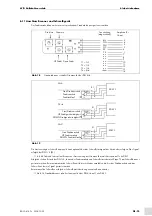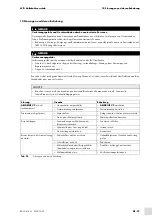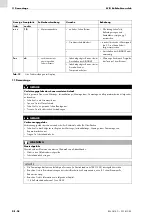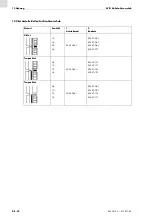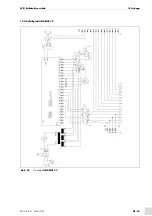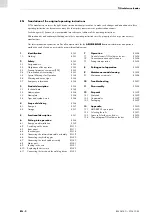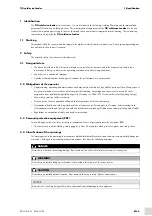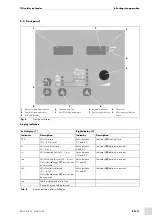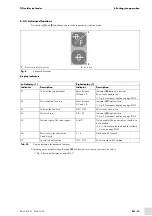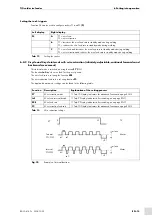
TIG cold-wire feeder
1 Identification
BAL.0415.0 • 2018-10-22
EN - 3
1 Identification
The
TIG cold-wire feeder
is a wire feeder. It is used in industry for delivering welding filler materials for manual and
automatic TIG cold-wire welding processes. The most important components of the
TIG cold-wire feeder
are the wire
feeder with separate power supply, the wire spool and the control modules integrated into the housing. These operating
instructions only describe the
TIG cold-wire feeder
.
1.1 Marking
This product fulfills the requirements that apply to the market to which it has been introduced. A corresponding marking has
been affixed to the product, if required.
2 Safety
The attached safety instructions must be observed.
2.1 Designated use
• The device described in these instructions may be used only for the purpose and in the manner described in these
instructions. In doing so, observe the operating, maintenance and servicing conditions.
• Any other use is considered improper.
• Unauthorised modifications or changes to enhance the performance are not permitted.
2.2 Obligations of the operator
• Commissioning, operating and maintenance work may only be carried out by qualified personnel. Qualified personnel
are persons who have received the necessary specialist training, knowledge and experience to assess the tasks
assigned to them and identify possible dangers (in Germany see TRBS 1203 [Technical Rules for Operating Safety]).
• Keep other people out of the work area.
• Please observe the occupational health and safety regulations of the relevant country.
• Occupational health and safety regulations of the relevant country. For example, in Germany: Arbeitsschutzgesetz
(Occupational Health and Safety Act) and Betriebssicherheitsverordnung (Ordinance on Industrial Safety and Health)
• Regulations on occupational safety and accident prevention
2.3 Personal protective equipment (PPE)
To avoid danger to the user, these instructions recommend the use of personal protective equipment (PPE).
• This consists of protective clothing, safety goggles, a class P3 respiratory mask, protective gloves and safety shoes.
2.4 Classification of the warnings
The warnings used in the operating instructions are divided into four different levels and shown prior to potentially dangerous
work steps. Arranged in descending order of importance, they have the following meanings:
DANGER
Describes an imminent threatening danger. If not avoided, this will result in fatal or extremely critical injuries.
WARNING
Describes a potentially dangerous situation. If not avoided, this may result in serious injuries.
CAUTION
Describes a potentially harmful situation. If not avoided, this may result in slight or minor injuries.
NOTICE
Describes the risk of impairing work results or potential material damage to the equipment.



